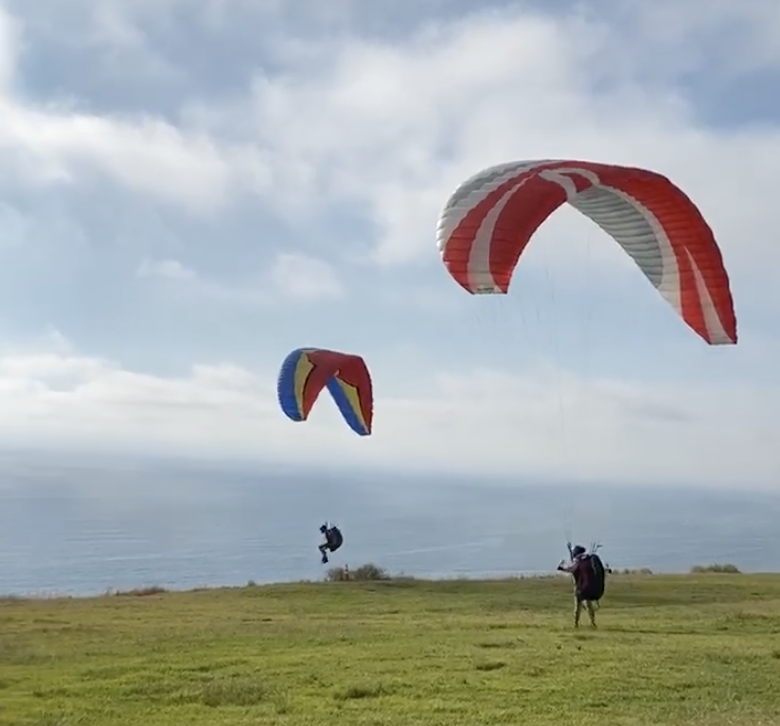By: Paul Monahan, Graves Golf Mental Game Coach
(AAI Schools)
Last week I visited the Torrey Pines Golf Course just North of San Diego, CA. It is an amazing slice of golf heaven. But believe it or not, the highlight of my trip there was a visit to the nearby Torrey Pines Glider Port. This is where grown adults intentionally walk/jump off a 325ft-high cliff toward the beach below …again, and again and again. They can’t get enough of it.
If I didn’t know better, I’d say it sounds a little crazy.

What they are really doing is called paragliding: floating on the thermal updrafts and ridge lift (vertical winds) created by the ocean breeze moving inland. These flyers gracefully raise fabric wings above them and fly around in the buoyant currents of air for hours. It’s really cool to see up close.
While they are doing this, what they focus on becomes very important. (No, duh! Ok…just hear me out…) Among other things, they must stay aware of their position in space, their proximity to other fliers, the ground, and the cliff below them…as well as where they ultimately want to go. To fly safe – and to achieve their mission – they must not get fixated only on the things right in front of them, even if those things represent potential danger.
Where they are looking matters – for achieving short term AND longer-term goals. Their success as paragliders depends upon their capacity to notice what is going on around them, and yet still steer themselves to where they want to go.
In aviation circles there is a saying: Where you look is where you will go. (If you keep staring at the cliff, you will eventually fly into it.) There is a reason this is a saying…because it happens. Sometimes pilots get mesmerized by the things close to them.
My friend and colleague Rob Nielson – a former US Army helicopter pilot – recently told me:
“I remember the first time a flight instructor told me to drop my scout helicopter into a riverbed at 140 MPH with trees soaring above and around us, with about 10 feet of clearance on either side of the rotor disc. He told me exactly what you said: Look to where you want to go and your hands will fly you there.”
What do you spend your time looking at when you play on the course? It is so easy to get fixated on that the danger we perceive. The out of bounds on the left. The creek on the right. The trap near the green. The branch you are trying to hit under.
The problem is that when we get fixated on these things, we can lose perspective. We can lose sight of the longer-term objective. The place we ultimately want to get to…our purpose…the reason we were are playing the game.
We perform at our best when we are aware and conscious of all the things around us -and at the same time aware of and very clear about our ultimate objectives.
Moe Norman famously described all the “trouble” on the courses he played as “decorations.” And in keeping with his philosophy of playing with an “alert attitude of indifference,” Moe simply saw these things for what they were – but kept his focus on the goal: the fairway, the green, the hole.
Moe trusted that his “…hands would fly him there.”
There is a lot going on when you are playing golf. Lots of shiny objects and danger that are like the cliff at Torrey Pines, or the trees next to Rob Nielson’s helicopter rotors. Yes, it’s prudent to be aware of them…but it won’t serve you very well to focus only on them. Only one thing really matters.
Bring your eyes up. Change your language about what you see. (Do you see a sand trap?…or do you see a decoration?) Reconnect with where you really want to go on the course. (Forget about where you don’t want to go.) Trust that your hands know what to do.
And then step up and hit it there.

